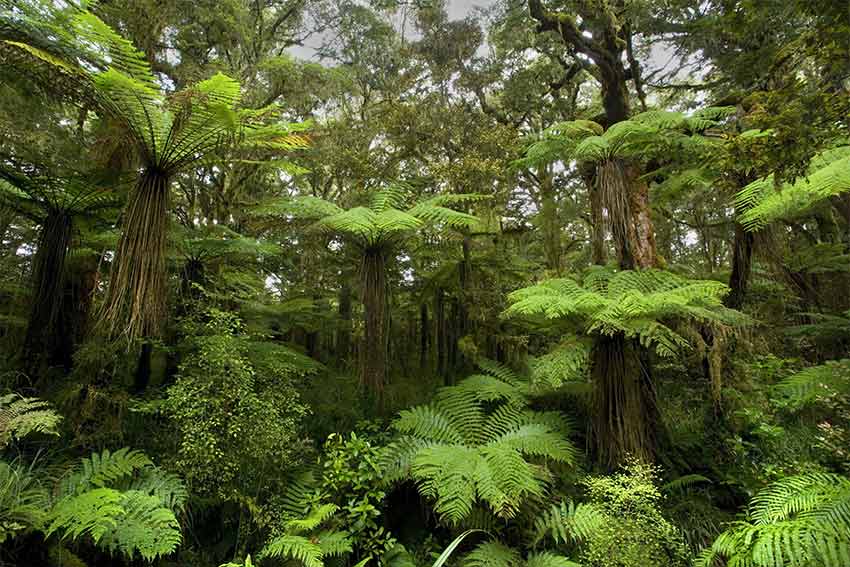Why plants don’t simply grow faster

Carbon dioxide is a fertiliser for plants, so if its concentration increases in the atmosphere then plants will grow better. So what is the problem? – a question from Doug in Lower Hutt
Rising atmospheric carbon dioxide (CO₂) is warming our climate, but it also affects plants directly.
A tree planted in the 1850s will have seen its diet (in terms of atmospheric carbon dioxide) double from its early days to the middle of our century. More CO₂ generally leads to higher rates of photosynthesis and less water consumption in plants. So, at first sight, it seems that CO₂ can only be beneficial for our plants.
But things are a lot more complex than that. Higher levels of photosynthesis don’t necessarily lead to more biomass production, let alone to more carbon dioxide sequestration. At night, plants release CO₂ just like animals or humans, and if those respiration rates increase simultaneously, the turnover of carbon increases, but the carbon stock doesn’t. You can think of this like a bank account – if you earn more but also spend more, you’re not becoming any richer.
Even if plants grow more and faster, some studies show there is a risk for them to have shorter lifespans. This again can have negative effects on the carbon locked away in biomass and soils. In fact, fast-growing trees (e.g. plantation forests) store a lot less carbon per surface area than old, undisturbed forests that show very little growth. Another example shows that plants in the deep shade may profit from higher levels of CO₂, leading to more vigorous growth of vines, faster turnover, and, again, less carbon stored per surface area.
Water savings
The effect of CO₂ on the amount of water plants use may be more important than the primary effect on photosynthesis. Plants tend to close their leaf pores slightly under elevated levels of CO₂, leading to water savings. In certain (dry) areas, this may indeed lead to more plant growth.
But again, things are much more complex and we don’t always see positive responses. Research we published in Nature Plants this year on grasslands around the globe showed that while dry sites can profit from more CO₂, there are complex interactions with rainfall. Depending on when the rain falls, some sites show zero or even negative effects in terms of biomass production.
Currently, a net amount of three gigatons of carbon are thought to be removed from the atmosphere by plants every year. This stands against over 11 gigatons of human-induced release of CO₂. It is also unclear what fraction of the three gigatons plants are taking up due to rising levels of CO₂.
In summary, rising CO₂ is certainly not bad for plants, and if we restored forested land at a global scale, we could help capture additional atmospheric carbon dioxide. But such simulations are optimistic and rely on conversion of much needed agricultural land to forests. Reductions in our emissions are unavoidable, and we have very strong evidence that plants alone will not be able to solve our CO₂ problem .
![]()
Sebastian Leuzinger, Associate Professor, Auckland University of Technology
This article is republished from The Conversation under a Creative Commons license. Read the original article.